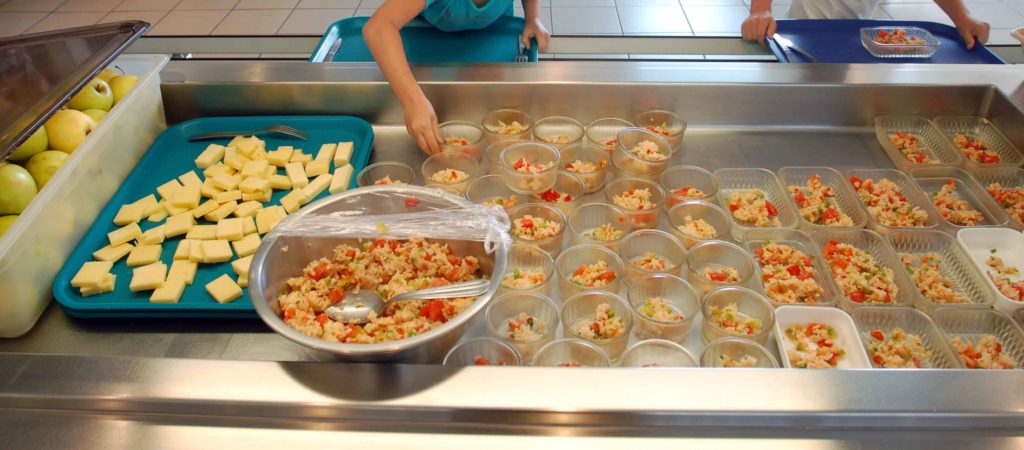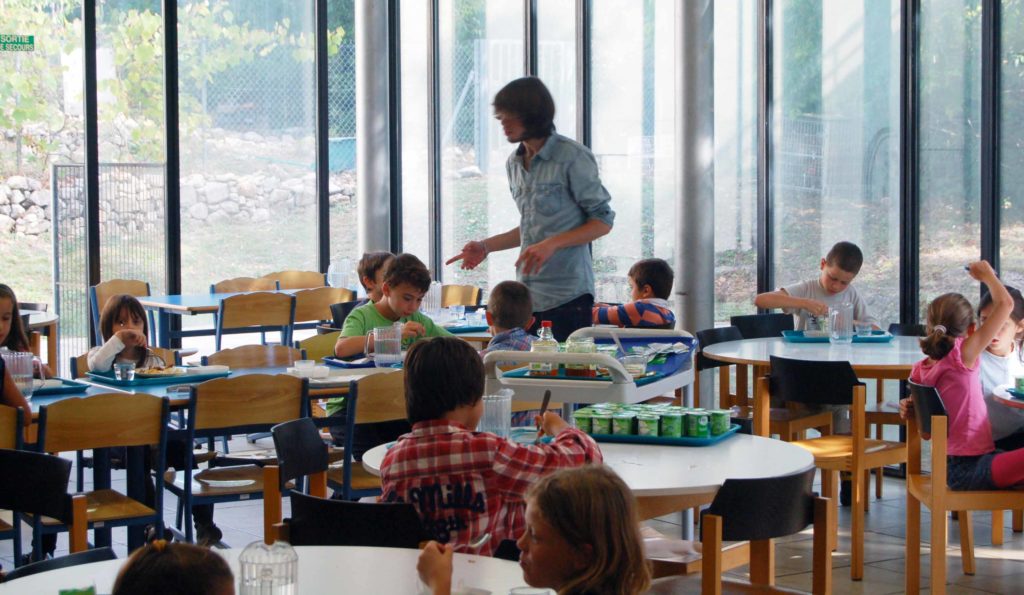Portions as desired
Meal time is a moment of sharing, de friendliness andtickling des papilles autant que des esprits. Les convives choisissent la portion qui leur convient : petite ou grande, en fonction de leur appétit. Le plat principal est servi par le personnel à la demande de l’enfant, les fruits sont coupés en quartiers. Bien entendu, il ne s’agit pas de s’affranchir des recommandations nutritionnelles en vigueur (consignées dans le guide du GEMRCN), mais de ne pas jeter non plus à la poubelle ce qui a été payé et produit en amont. Pour l’ensemble des plats, l’enfant peut se resservir au besoin. Cela favorise l’apprentissage de food self-sufficiency, with the help of the facilitators who supervise the lunch break.

Le personnel encadrant, composé des équipes du service animation, joue le rôle d’une courroie de the good values. Chaque animateur est chargé de vérifier si tout se déroule bien, c’est-à-dire si les enfants consomment régulièrement les plats qui leur sont proposés, en les invitant à ne pas rechigner certaines denrées. C’est la traduction pratique des objectifs du Plan national nutrition santé (PNNS) dont les convives découvrent l’intérêt par et pour eux-mêmes. "There are two aspects to consider, explique Isabelle Poretti, responsable du service animation. On the one hand we want them to leave and take the time to eat, on the other hand to raise awareness about food waste. For this, we talk with children, for example, explaining that under-nutrition is still a problem in some countries, that bio is good for the planet or that eating well and balanced is a fundamental right. "
Room or self service

The supervisory staff plays a vital role in the education and transmission of good values during lunch time.
Kindergarten children are served directly on table. As future grown-up, they require special attention. The mealtime is for them a way to conquer their own autonomy, to discover the foods, tastes and flavors diversity. The animators propose them to play with colors, foods combinations, privileging a convivial and playful approach. Elementary classes are also entitled to a table meal in spaces away from the refectory, but usually the principle of self-service has been retained. They discover how they are able to develop their independence. Greeted by the kitchen staff and a facilitator, they are entitled to explanations about the composition of the dishes and the interest to vary their diet. In this way a strong bond is established between the staff and the young guests: the opposite of an anonymous reception where relations are usually limited to mechanical reflexes.